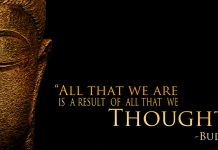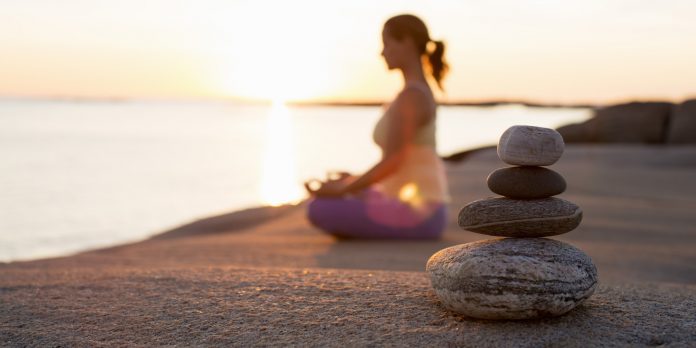1. What is meditation?
Meditation is a balancing technique. Through balance, holistic awareness expands and the many benefits of meditation begin to unfold.
2. Why is meditation important?
Meditation is important for many reasons. First, meditation begins a process of multi-dimensional actualization. The impact that it can have on your life is profound — including balance, wakefulness, wholeness, and the ultimate fulfillment of being human. Additionally, one may experience a reduction in stress and many other physical, emotional and mental benefits.
3. Does meditation reduce stress?
The short answer is yes. But this is just a by-product of much more important benefits such as balance, wakefulness, increasing multi-dimensional wholeness and fulfillment.
4. How long do I need to sit to meditate?
The general answer is: as long as you are comfortable doing so. If you can meditate for 15 minutes, then do so. If you can meditate for an hour, then do so. Our primary in-home meditation program, the Recognitions Program, is designed for one-hour meditation sessions.
That being said, you need to pay close attention to what we call your peak level of tolerance. It is possible to meditate too much. Even one hour a day may be too much for beginner. Initially it may be best to meditate for 15 to 30 minutes a day. You must simply pay attention to your experience and observe how you are doing. If you are exceeding your peak, then back off, or even skip a day. Perhaps take a nice contemplative walk in the park instead.
More is not always better. This is yet another example of why a teacher is very important.
5. How often do I need to meditate?
You should meditate on a daily basis. If you can meditate more than once a day, do so. Being regular in your practice generates momentum and makes your experience more natural and effortless.
But again, pay attention to your peak level of tolerance. Fast progress is not better, rather steady forward motion is the way to go. Determine the proper amount of meditation that you can practice each day to insure the maintenance of balance and wakefulness.
6. Do I need to meditate for years before experiencing the benefits?
Some of the benefits of meditation will begin to unfold immediately — such as a reduction in stress, which you will notice simply by closing your eyes and focusing within. If you simultaneously flow positive feelings, such as gratitude and love, you will also experience these benefits. When you conclude your meditation and resume your daily life activities, you will notice a softer, peaceful and more positive experience. With regular practice, the innate happiness and joy of life will be more naturally experienced.
7. Do I need to live as a monk in order to experience bliss and peace?
No, you do not need to be a monk or renunciant.
You can have a very profound meditative journey within your life experience as it is. Just be regular in your practice. Master spiritual teacher, Master Charles Cannon, developed High-Tech Meditation® to make it easy for people in the modern world to experience the benefits of meditation while living active lives, in the comfort of their own homes.
8. Is meditation suitable for children?
Meditation is suitable for everyone. For children, meditation is especially helpful to foster normal brain development, which will be beneficial as the child matures. “The Beginners Guide to Meditation” describes research that shows the effectiveness of meditation and its impact on the brain and its development.
9. What sitting position is best for meditation?
For best results, we recommend you sit with your back straight and without back support. You may sit on a chair or cross-legged on a cushion. That being said, not everyone is able to sit this way. We suggest that you experiment a little at first, try different positions and then choose the one that is most comfortable for you and that produces the least amount of body noise.
10. What is all the talk about some meditation positions being better than others?
There is some truth to these claims, but it is not significant enough to matter for most people. The general idea is that you want to remain as alert and attentive, as wakeful, as you can, and allow life energy to flow through you unencumbered. Slouching can restrict energy flow. And sitting with back support can induce sleep.
But again, whatever works for you is how you should sit. Don’t worry about it. Life energy is intelligent. When it wants to flow upwards it will naturally shift your position.
Then why do we recommend sitting straight and with no back support if you are able? This is because by sitting with a straight back, you are supporting the upward flow of life energy from the beginning of the meditation.
11. Can I lie down while meditating?
We generally don’t recommend it for beginners. It is best to meditate without back support as mentioned above. That being said, lying down while meditating for long periods of time can be very effective for advanced meditators and under certain conditions.
For an advanced meditator, if you are meditating for longer periods of time, like an hour or more, it can be beneficial to begin in a sitting position for at least an hour and then have a period of integration while lying down. But the problem with lying down from the beginning is that you can easily fall asleep. The intention is to remain as wakeful as you possibly can throughout the entire meditation experience.
12. Sometimes I fall asleep when I meditate. Is this a problem?
As your meditative journey progresses, you will experience new levels of consciousness. These levels are associated with increasing holistic power and you may experience what is termed “absence.” But the experience is not sleep. Consciousness is simply managing your process until you have integrated the new level of power and find yourself more wakeful again. It’s all a matter of managing the peak experience of meditation in a way that is tolerable.
13. What is absorption?
The experience of absence during meditation is termed absorption. The level of consciousness that you access determines the type of absorption you experience. These experiences have different names in the different wisdom traditions.
As you continue to meditate, you will integrate the new level of consciousness and be wakeful and aware at that level as you then progress in your meditative experience. This is a natural process. So, when you notice that you have been absent, celebrate and be grateful and, when you are able to remain wakeful, celebrate and be grateful. All experience is valid.
Eventually, you will be able to access very subtle levels of consciousness and maintain wakefulness even while in very deep absorption.
14. Can I meditate after eating?
It is best to meditate on an empty stomach. If you meditate while your body is digesting food, you may experience falling asleep because some of your energy is consumed in the digestion process.
If you have no other time to meditate, it is better to do so after eating than not at all, but sit upright without back support to cultivate wakefulness.
15. Is a teacher necessary?
It is our perspective that a meditation teacher is necessary. Some will say that a guide is not needed. But that is not our recommendation. Actually, beginning meditation may be a very confusing time and many people stop simply because they do not understand the experience they are having, even though the experience is very positive and beneficial.
There are many reasons for having a meditation teacher:
Assists you to understand your experience.
Helps you see when you are stuck and how to address it.
Points you in the right direction as needed.
Empowers you.
Without holistic empowerment, one cannot access the subtlest levels of consciousness. Actualizing holistic experience and remaining constant at that level is extremely rare. A master spiritual teacher and the holistic empowerment that he / she delivers is essential to move beyond the major challenges on the path. These challenges most often require the assistance of a master spiritual teacher.
16. Do affirmations or mantras help?
Yes, they are most helpful and there is a vast philosophical system behind them.
Affirmations and mantras are techniques of balance and are also vehicles of empowerment when given to you by a master spiritual teacher.
The basic premise is that you choose truthful, life-affirmative statements and repeat them. But saying them is, in itself, not enough and will have minimal effect. You must also simultaneously feel the experience of the affirmation you are saying. Therefore, affirm love, affirm gratitude, and engage your feelings at the same time. This will create the balance essential to holistic awareness expansion.
17. Sometimes when I meditate, I notice that I don’t sleep as long. Why?
If this is happening to you now, or has happened to you in the past, just flow with it.
This experience happens because your wakefulness has expanded to the point that you are actually aware you are sleeping. However, the mind confuses this state with being awake. This is very similar to the deep states of meditation and absorption discussed above and is actually the same process, but in a different context. Notice that you feel completely refreshed in the morning.
18. Is Kundalini energy real and, if so, what is it?
This is a vast subject, so we will just answer the question at hand and discuss it in depth on another webpage.
Yes, Kundalini energy is real. It is the evolutionary life force within you. In some cultures it is referred to as primordial energy or Qi. For most human beings it remains mostly dormant—just active enough to animate the human form—but at a certain point in life it can awaken. Rarely does it awaken spontaneously or through rigorous practice, but rather almost always requires a master spiritual teacher to initiate the process.
Once Kundalini energy awakens, the evolutionary spiritual journey begins. Over time the energy moves upward to the top of your head and the crown vortex. As it moves upward, it opens the energy centers or chakras and fully energizes the related meridian system.
19. What are the chakras?
The chakras are the energy centers (or vortices) within the human form. Many wisdom traditions ascribe human beings as having seven major energy centers, beginning at the base of the spine and ending at the crown of the head. There are particular expressions associated with each energy center.
As Kundalini moves up the spine, it opens and activates each energy center, thus expressing the energy that it contains and integrating it into your being. Once all seven energy centers are open and activated, you experience the wholeness and fulfillment of a fully integrated human being.
20. Do I need to be celibate to experience unified consciousness?
No, you do not need to be celibate to move forward on the spiritual path. At a certain point in the evolutionary process, containment of the sexual energy naturally unfolds. It is important to understand that sexual energy for both men and women is part of Kundalini energy. So, when it is released in sexual experience, some of it is lost. Containment preserves this important energy for spiritual evolution. For people on the spiritual journey who want to maintain maximum Kundalini actualization, it is helpful to practice containment in some way, even if in a relationship. For the individual interested in learning more about this subject, it is most important to have a master spiritual teacher who is adept in the process.
21. How can I open the chakras?
Most importantly, don’t try to open the energy centers and force Kundalini energy to actualize. This experience happens naturally and without effort on your part. Just maintain your daily meditation and holistic lifestyle practice and everything will naturally unfold.
Trying to force the experience is actually counter-productive in the meditative journey and is a block to progress. Meditation is about wakefulness and being present in the momentary happening of consciousness. It is not about making something happen. Trying to do so takes you out of the moment and diminishes your balance. Some people spend a lifetime trying to make the heart or third eye open while not realizing if they just let go and trust, consciousness will appropriately orchestrate the experience.
22. Are there any shortcuts that I can take?
Not really. The meditative process is a progressive journey to wholeness and fulfillment. It does not happen overnight. Don’t listen to people who promise instant enlightenment or short-cuts to holistic experience.
You can however increase precision in your practice. As an example, the use of High-Tech Meditation increases balance and results in efficiency in the meditative process. It balances the left and right hemispheres of the brain, decelerates the frequency of brainwaves and entrains a meditative brainwave profile. (For more details visit the High-Tech Meditation page.)
As a result of precision-balancing technology, more expanded states of consciousness are possible without the need to go to a cave or become a monk.
In short, High-Tech Meditation allows those of us living in the modern world to enjoy a meditation experience which was once only possible for the most dedicated meditators.
23. My mind keeps thinking when I try to meditate. What am I doing wrong?
Most importantly, thinking is not doing anything wrong. Yet, this is an important question because it sometimes causes people to stop meditating. You can read more about it in the “Meditation for Beginners Guide”.
Meditation is about wakefulness, being in the present moment, being a witness of what is happening … whatever it is. So, when your mind is thinking, simply notice that your mind is thinking. But let’s contemplate this. When you say to yourself, “My mind is thinking”, who is actually saying this? It is originating from another level of you, the level of you that is always watching. In the beginning, this is subtle and may be difficult to notice. As you progress, however, this witnessing level of your multi-dimensional being becomes stronger and more pronounced.
The mind will never go away. It will always be the mind. However, with practice you can increase the dominance of the witnessing consciousness in the center of your being.
We recommend that meditators use a focusing technique to create balance and dominant mental stillness. There are many techniques including breath, affirmations and mantras. It does not matter which one you use, as they are all equally effective. When your mind becomes balanced and dominantly still and you are more fully present, you can drop the technique and just be wakeful in the moment. As soon as the mind becomes active again, resume the technique and repeat this practice as often as needed. In time the need for focusing techniques diminishes. But, don’t expect the mind to become totally silent and still. This is a myth.
From –www.mastercharlescannon.com


















